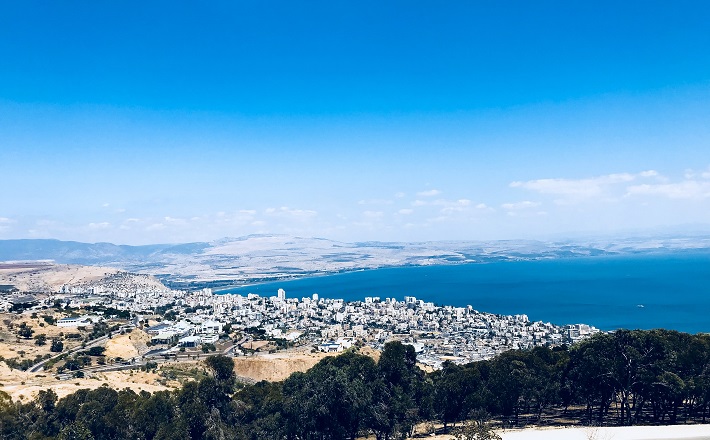Commentary on Nehemiah 8:1-3, 5-6, 8-10
The book of Ezra-Nehemiah could have easily ended at Nehemiah 7.
By that time, the people had returned to Judah, rebuilt the temple and restored the city walls. Nehemiah 7 closes a section with a long genealogy of the repatriates, a list which largely matches the genealogy of Ezra 2. The very end at Nehemiah 7:73 indicates that the people of Israel had settled in their cities. The idea of “settling” is fitting closure for a narrative that centers on a diasporic people, who return to a homeland after multiple generations in exile.
But the story is not yet complete. Nehemiah 8 opens with a reintroduction of the scribe and priest, Ezra. Perhaps the conclusion of settling in cities was premature. Questions remained. How was the community to live in shalom with one another? What were some principles for reformulating a collective identity as worshippers of God? How can we prevent any further divine punishment?
Nehemiah 8 answers these questions by elevating the place of the Torah in the community. This emphasis largely matches the rest of the Old Testament. From the Exodus narratives, the Torah occupies a central role in God’s instruction. In biblical texts, the word “Torah” refers to both the teaching of God as well as the specific legal code given to Moses. The revelation of Torah crystallizes in the Ten Commandments on Mount Sinai and is associated with instructions on sacrifices and purity.
“The Book of Torah of Moses”
But Nehemiah 8 shows a very significant development of the term Torah. For Nehemiah, the Torah is still teaching, and it is still specific instruction associated with legal materials. But Torah was understood to be a collection of material circulated through oral transmission. God spoke on Mount Sinai. The entire book of Deuteronomy is essentially a long speech! But Nehemiah uses a very rare phrase, “Book of the Torah of Moses” (8:1) to categorize Torah as a written text. Ezra reads from it (8:3). He opens the book (8:5) and this act engenders a response of respect from the people (8:5). It is read and then interpreted (8:8). As the reader, Ezra’s qualifications are underscored with two mentions of his office as a scribe (8:1, 9).
Remember that at the time of Ezra-Nehemiah, Judah is still a very oral society with literacy at less than 3% and restricted to the elite. Most people did not have direct access to the Word of God. That is why the book or scroll was brought before the people. With the written Torah, everyone could hear the teachings of God. Consider that Ezra was a scribe. Not only was he of the 3% literate, but as a professional scribe, he was probably the most literate of the community. He would be one of the select few who could actually have some sort of access to this Torah. But the leadership decision is not to talk about Torah, but to empower the rest of the people by reading directly from the written text.
And the reading is not merely a few moments. Ezra chooses from early morning to midday and the people listen. And this reading from the book of Torah was powerful. Ezra read for 6-7 hours and the people were attentive. How can that be? Imagine that you were not literate, and you did not have access to Bibles, and together in a community. This was a rough time. You are socially displaced, living back in Jerusalem, but everywhere you go is a reminder that God had allowed destruction of the temple and the rulers are not Davides but Persians. But you get a rare opportunity to hear the word of God. The people had a deep hunger for the Torah, they had a deep hunger for the teachings of God because their lives needed it.
The reading of the Torah brought a natural response of the people. It was bodily, with people standing up in response. The lifting of hands was a sign of need and dependence explained in Psalms 28:2 and 134:2. Their bodies naturally turned to positions of worship in response to the reading of Torah.
“All who have ears to hear”
Another striking aspect of the passage is a fierce inclusivity. The Torah was meant for all. The text specifically refers to both “men and women.” Grammatically, the Hebrew word for “men” can be understood as inclusive of both genders. In fact, it is rare for the Bible, or even any pre-modern literature to specifically address both men and women. Even throughout church history, the main figures are almost exclusively men: Augustine, Anselm, Aquinas, the reformers, and Karl Barth. I suggest that the explicit descriptor of “men and women” is deliberate and that leadership is inclusive. And it is not only women, but all who could hear with understanding –this includes children.
A fitting application today, in 2019, is the idea that the hearers of Torah are not delimited by gender lines but extends to all liminal spaces including ethnicity, class, different degrees of able-bodiness, and age, or any other external category. Leadership belongs to the community, so it must be inclusive. And the address of “men and women” in verses 2 and 3 is complemented by the address to “all the people” in verses 1, 5, 6.
This written Torah is still transformative today. I encourage you to refrain from legalistic assumptions, dangerously anti-Semitic in much Christian interpretation. But instead, I suggest that you embrace a form of Torah that is powerful, inclusive, and brings about transformation in a community in need of learning to live in the reality of God’s love.


January 27, 2019